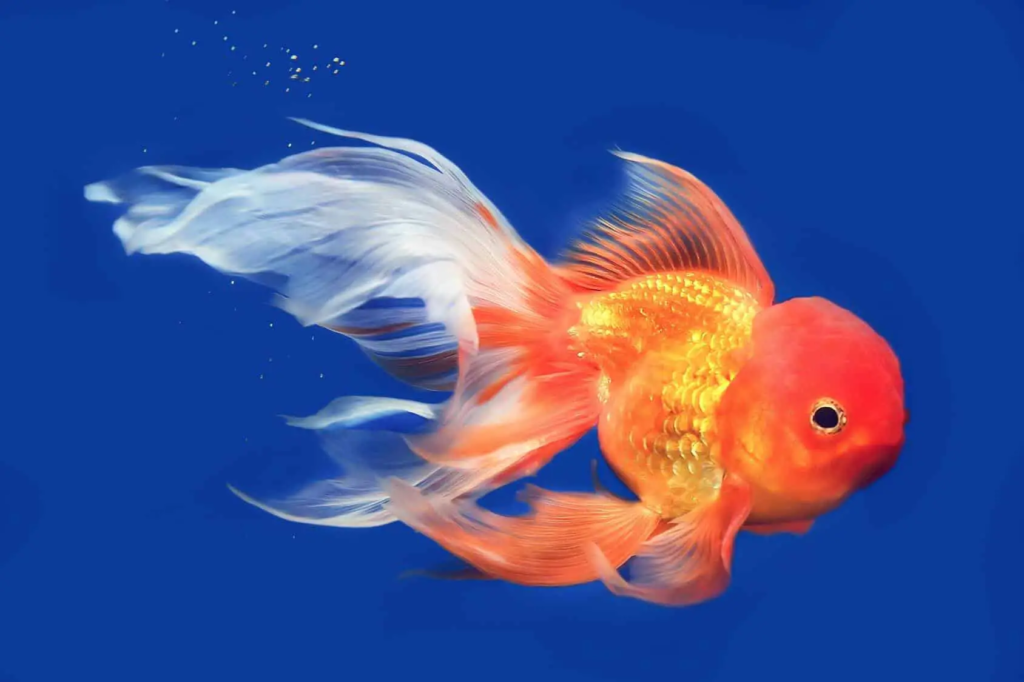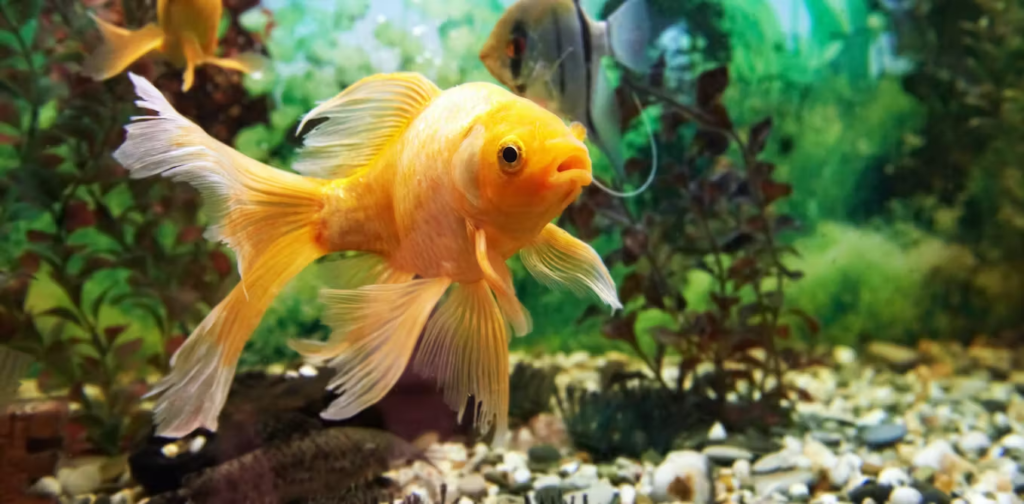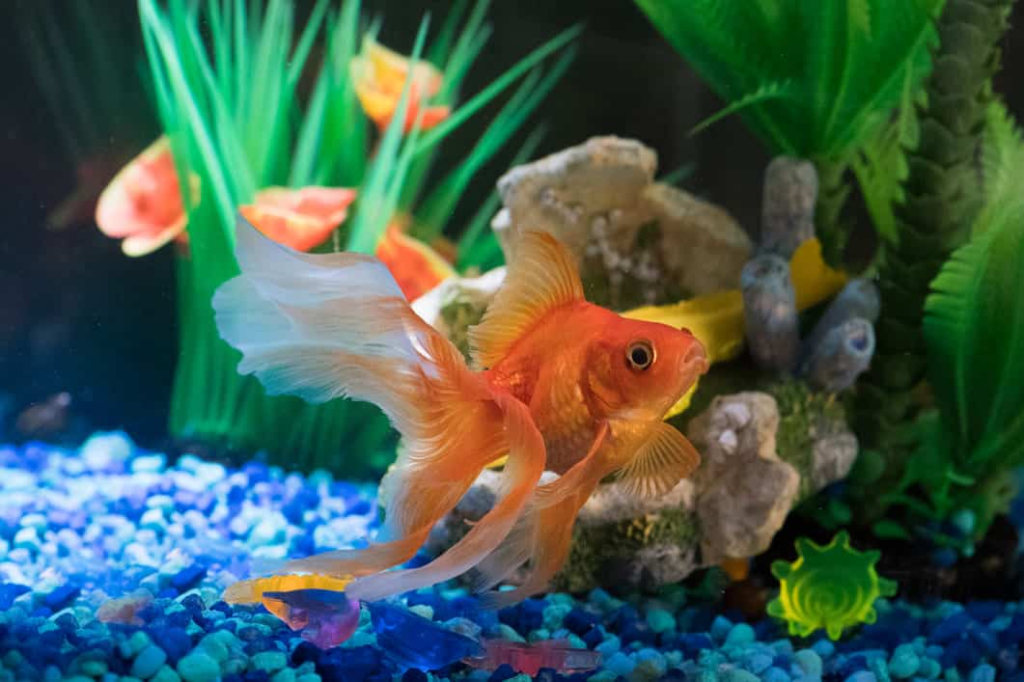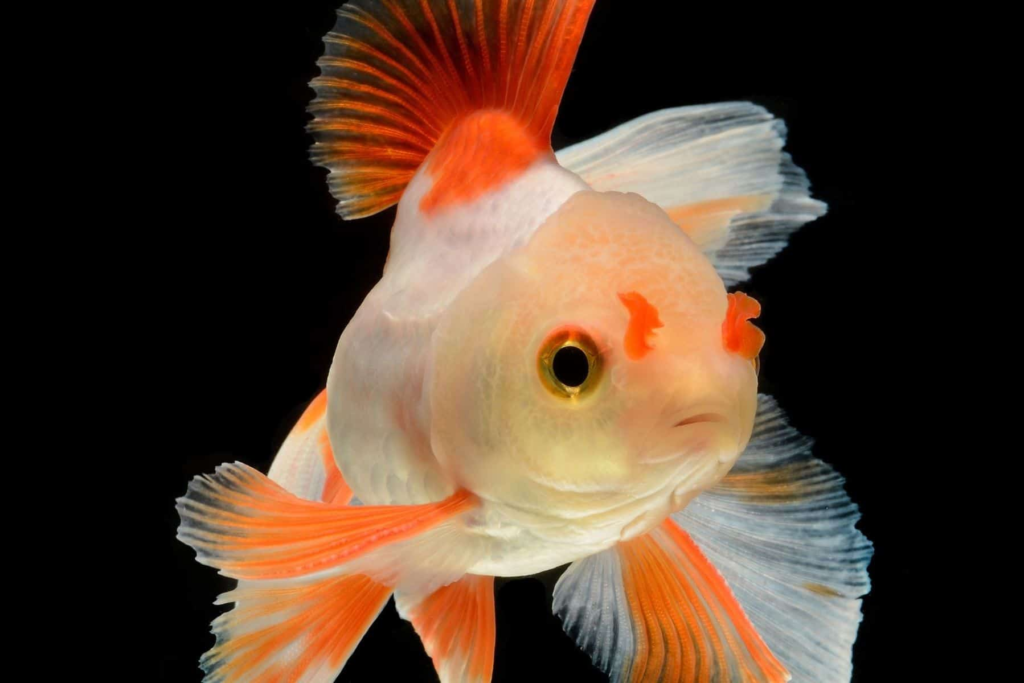
Direct your gaze to the mesmerizing world of underwater beauty – no, not the latest Aquaman movie – we’re talking about your soon-to-be aquarium and its foremost occupier – the goldfish! A monument of aquatic grace, goldfish bring life and tranquility to the most mundane spaces, particularly if you keep them in, let’s say, a fish tank that’s eerily similar to a Sardine tin. But really, who can blame you? Choosing a fish tank can be as perplexing as picking the right wine for a date. Does it matter? And just how much? Cue the ominous thunderclap, because we’re about to reveal something fishy.
The Importance of Tank Space for Goldfish
Why Providing the Right Tank Size Is Crucial for Goldfish

Size matters! No, not just during Black Friday sales, it’s a primal truth that holds water (pun intended) when planning the best living space for your golden Gilbert. You see, the state of being “just a goldfish” is pretty much like saying Usain Bolt is “just a guy who runs.” Goldfish are more complex than they appear, and the size of their tank significantly influences their health and lifespan.
Living in a small area is like being quarantined in a tiny apartment; pretty soon, the walls start closing in, and everything becomes a smidge claustrophobic – and trust me, goldfish are no fans of living The Shining! Tiny tanks can cramp their style and even stunt their growth. Another inconvenience about small tanks is that they don’t dilute waste well. No one appreciates swimming in their own waste, even fish – they didn’t sign up for that when they moved in!
Importance of Giving Your Goldfish Enough Space
If you were lucky enough to watch Finding Nemo, you would know that fish are not too different from us. You wouldn’t enjoy living in a shoebox, regardless of how fabulous those high-heels were, so why expect that of Gill the Goldfish?
A spacious environment provides room for goldfish to express their inner Michael Phelps, promoting good physical health. It also allows them the space to establish territories and interact with potential tankmates. Considerations akin to those of young couples purchasing their first loft with enough room for a potential mini-me.
And that’s not all: more room means easier maintenance. How? The larger the tank, the lower the rate of water contamination, leading to fewer hours playing ‘underwater cleaner’. Remember, your role in this fishy game is that of a caring landlord, not a full-time janitor!
Armed with your newfound knowledge of why tank size matters, you’re one step closer to invoking that Cheshire-cat grin on your goldfish’s face. But how do you calculate the perfect size? Well, get your calculator ready as we dive deeper into the world of gallon-per-inch ratios in the next section, “Understanding Goldfish Requirements”.
Understanding Goldfish Requirements

Before you take the plunge (pun intended) and invest in a sparkling new tank for your aquatic friend, it’s crucial to understand the basic requirements that goldfish need to swim happily into old age. Goldfish are a far cry from lifeless ornaments — they’re living, breathing, super-social creatures with specific needs.
Explaining The Natural Growth and Behavior of Goldfish
Goldfish are like the Peter Pans of the fish world; they never really stop growing. Yep, you read that right! Goldfish continue growing throughout their entire lives. In the wild, they can reach impressive lengths of up to 14 inches! Their size is often stunted in small aquariums due to inadequate space or poor water conditions, but this doesn’t mean they’re thriving. For a detailed explanation of their growth potential, check out our article, How Big Can a Goldfish Grow?
When choosing a home for your goldfish, it’s essential to base your tank size not on their current size but on their potential maximum size. Remember, the tiny, small fry you brought home will continue to grow, and it needs space to do so.
Goldfish are also naturally active and social creatures. They can even recognize their owners (aww!) and need space to explore, play hide-and-seek with tank decorations, and race their fellow goldfish comrades.
Providing them with an adequately sized tank and maintaining optimal water conditions are fundamental to supporting their natural growth and behavior. So, plan wisely and offer them a comfortable and happy life.
Need for Sufficient Swimming Space to Thrive

Now, the goldfish may not be competing for slots in the Fish Olympics anytime soon, but they sure do enjoy a good swim. Imagine being cooped up in a cramped apartment all day, every day. Sounds dreadful, right? Similarly, goldfish need plenty of room not just for growth, but also for swimming, scrummaging for food, and generally doing goldfish-y things.
A one-gallon-per-inch rule is often cited for goldfish. However, this guideline is an oversimplification and often leads to cramped conditions, since it doesn’t take into account the three-dimensional nature of the tank. Remember, goldfish have a need, a need for speed – and space!
Importance of Appropriate Filtration and Oxygenation
Here’s where things get a bit science-y, but bear with me. Goldfish aren’t just little food processing machines; they’re also poop factories. Yes, they generate a surprising amount of waste for such a tiny creature.
This means every goldfish tank needs a high-quality filtration system that can break down waste and pollutants efficiently, keeping the water in your fish’s luxury condo (a.k.a. tank) crystal clean and toxin-free. Additionally, goldfish gulp a good dose of oxygen to stay healthy. A well-oxygenated tank is important to keep your fish in top-notch form. So bottom line, invest in a proper filtration and oxygenation system. Your goldfish will thank you for it.
Now that we’ve got the basics down, let’s swim deeper and learn about calculating the perfect tank size based on your goldfish’s length. Sound complicated? Don’t worry; we’ll guide you through this with some simple fish-math!
Calculating Tank Space Based on Goldfish Length

Now comes the fun part, like a math class you actually enjoy. Calculating the tank size for your goldfish isn’t some sort of witchcraft, it’s simple arithmetic (with a bit of aquatic wisdom sprinkled in). And no, you don’t need to be a math whiz to figure this out.
Knowing the Average Adult Size of Different Goldfish Varieties
Firstly, you need to say your hellos to your tiny new guest, or rather, gauge how big your goldfish is going to get when it hits the prime of its life. This “fishtimate” is crucial as sizes can vary. A common goldfish might make a lap around the tank to hit a whopping 10 inches, while smaller species like fantails may just reach 6 inches in adulthood. Alright, got the size? Now let’s take a dive into the real thing.
Rule of Thumb: One Gallon of Water per Inch of Fish

There’s an age-old equation in the goldfish world that’s about as famous as E=mc^2 in physics. It’s the one-gallon-per-inch doctrine. According to this rule, if you have a goldfish that’s 3 inches long, it’s going to need at least 3 gallons of water to dance around. Simply put, for every inch of your goldfish, you need a corresponding gallon of water. But this is a bare minimum; we all like a bit of luxury, right?
Examples of Calculations Based on Specific Goldfish Lengths
For instance, if you decided to get a fantail who would shimmy around at around 6 inches upon adulthood, you’re looking at a 20-gallon tank, at least, to offer her some wiggle room. Now, if you bring home a common goldfish that’ll flash its swanky scales at a bulky 10 inches? Well, buckle up for a 40-gallon tank to cover the basics and give them the goldfish equivalent of an Olympic swimming pool.
It’s about to all become clearer as we factor in some fascinating variables like decorations, friendly neighbors, and their hotel-like amenities in the next section. Stay tuned and be ready to become the best fish tank architect ever.
Factors Affecting Tank Space Requirements

In a perfect world, determining your goldfish tank size would be as simple as applying the one gallon per inch of fish rule, but, “but”, or should I say “bubbllutt” (just imagine your goldfish swim away with a cute bubble from its mouth), there are other things to consider.
Taking into Consideration Potential Growth and Future Purchases
What might look like a Chihuahua-sized aquarium now, could become a Great Dane-sized problem later on. I might be exaggerating a tad here, but goldfishes, like tiny puppy breeds, are renowned for reaching impressive sizes. They are not quite staying at the tiny, cute level. Your goldfish will grow, and we’re not referring to the emotional bonding with your aquatic friend. So always calculate for the adult size of your goldfish, not the size at purchase. And if you suffer from that common ailment known as “New Fish Syndrome” (the irresistible urge to add just one more fish to your tank), always remember to leave some extra room.
From the height and growth potential of your goldfish, let’s dive deeper into the aesthetics of your aquarium life, including decorations and plants.
Accommodating Space for Tank Decorations and Plants

Your goldfish would appreciate some interior decor–after all, who doesn’t love a well-decorated home? Rocks, castles, water plants don’t just make your tank aesthetically pleasing, they also provide an enriched environment for your goldfish. But, these added decorations take up swimming space, like your grandma’s antique coffee table in the middle of your living room. So when you’re selecting a tank, keep in mind that your goldfish needs space to zoom around the “furniture” without bonking its cute little noggin. And for the plants, well they need space to, um, plant their roots.
Let’s switch from the logistics of fitting decor, to understanding the social distancing rules in the goldfish world.
Accounting for Territorial Behavior or Specific Goldfish Varieties
Not every goldfish likes to cuddle, or bubble, with its tank mates. Some goldfish have a little Sheldon Cooper in them – they have their spot and don’t appreciate any other fishy bodies infringing on their territory. Other goldfish varieties may even show aggressive behavior if they feel their space is being invaded. So, when calculating tank size, bear in mind that some fish like a little, or a lot, of alone time.
Now that we’ve explored factors that can affect the size of your goldfish tank, we’re going to dive into the deep end and discuss common mistakes to avoid when setting up your goldfish’s new oceanfront view— trust me, there are more waves to ride in the realm of fish parenting!
Common Mistakes to Avoid

Oh, you happy fish-keeper, you! You’ve been dreaming of a goldfish utopia buzzing with life, but beware of the dark path of fish-keeping where dreams can sink faster than the Titanic. Here are some common blunders that can turn your golden dreams into a fishy nightmare.
Underestimating the Growth Potential of Goldfish
Write this down, get it tattooed on your arm, or put it on a post-it! Remember, goldfish aren’t designed to stay as cute, quaint, petite party bag handouts that some vendors will have you believe. They can actually grow to be the Lebron James of the fish world. Underestimating their growth potential is like planning to raise a pony in your closet. It’s not going to end well. Your small goldfish today could end up being the big fish in a small pond…literally!
Transiting to the next gaffe, imagine cramming for a party at your home where the guests are equivalent to a Rolling Stones concert audience. A fun thought until there’s a race for the only bathroom in the house, right? Well, that’s exactly what overcrowding your tank feels like to your fish.
Overcrowding the Tank and Compromising Water Quality

Overcrowding is the fish equivalent of a traffic snarl-up in rush hour. There’s no room to fin a decent lap, nip jealousy in the bud becomes a constant struggle, and water quality plummets faster than my motivation to exercise on a Friday night. Increased waste due to overcrowding leads to high ammonia levels which is like, forgive my bluntness, living in a toilet. Definitely not the high-quality lifestyle you want for your scaly chums.
Speaking of quality, what’s a tank without clean, fresh water? It’s just a fishy landfill! So, the next common mistake has all to do with ignoring the clear call for additional filtration when you put more fish in the pool party.
Not Accounting for Additional Filtration Needs When Overstocking
It’s simply not enough tossing in more fish without considering the need for extra clean-up. Additional filtration is like hiring more janitors when a huge crowd is expected at a concert. Denying it is swimming towards an algae-filled disaster zone. No fish would choose to live in their own waste, unless they’re on a reality TV show nobody signed up for.
After crossing this sea of potential blunders, the shores of an ideal goldfish home are near. Up next, we’ll throw in some pro tips for optimising your goldfish’s environment that’ll make you the Aquaman (or Aquawoman) of your very own underwater kingdom. Stay tuned!
Tips for Optimizing Your Goldfish’s Environment

Every goldfish owner dreams of running an underwater utopia where their scaly buddies can frolic merrily. But creating a goldfish Shangri-La takes more than a dash of love and a sprinkling of fish flakes. Let’s plunge into the deep end and explore how to optimize your tank environment.
Providing Adequate Hiding Spots and Swimming Areas
Goldfish, like teenagers, occasionally seek solitude. A hiding spot not only offers them a retreat from the glaring eyes of starstruck admirers, but it also provides a sense of security. Tank ornaments, caves, and plants are ideal hideaways− that also double up as chic interior decor. Be fashion-forward while keeping your goldfish happy; Now, that’s what I call killing two fish with one stone (please note that this is a metaphor and do not use actual stones).
In between their hide-and-seek solitaire games, goldfish love to exercise and explore their habitat. Be sure to provide ample swimming areas where they can weave in and out, assuming they’re doing a synchronized swimming routine.
After setting up the perfect underwater maze, it’s time to focus on ensuring the proverbial “clear blue waters” that our finny friends crave for.
Maintaining Proper Filtration and Regular Water Changes

In an ideal world, your goldfish would have a team of aquatic housekeepers to keep their castle pristine. Since such a service doesn’t exist (yet), let’s stick with a good filtration system for now. An adequate filtration system is like the janitor of your fish tank, working round the clock to remove waste, excess food, and potential toxins.
But keep in mind that even a top-notch filtration system can’t do it all alone and needs your help. Regular water changes, about 10-20% of the tank volume every week will supplement the filtration system in maintaining a clean environment. Think of it as renewing the lease on your goldfish’s life in joyous, crystal-clear water.
With their environment spick and span, we’re now ready to talk about the equivalent of a goldfish’s annual physical at the GP’s office.
Monitoring Water Parameters and Adjusting Tank Size Accordingly
Just like humans have normal body temperature, goldfish have ideal water parameters that keep them hale and hearty. Be on the lookout for changes in pH level, ammonia, nitrite, and nitrate levels, temperature, and hardness. A dipstrip or liquid test kit from your local pet store can do this job without getting those cute whiskers out of joint.
If the parameters seem a bit askew, you might need to adjust your fish’s water apartment’s size. Always remember, a spacious home isn’t just a status symbol in the goldfish society but a necessary prerequisite.
Now that we’ve skimmed the surface of creating a “Better Homes and Gardens”-worthy sanctuary for your goldfish, always remember that each goldfish is unique and may need slight adjustments to this blueprint. As we plunge further into the intricacies of goldfish-keeping, let us explore some of the pitfalls you should avoid, coming up in the next segment.
Conclusion

Choosing the Right Tank Size is Crucial for Your Goldfish’s Health
Let’s reel it in and face the facts about our finned friends. Providing adequate tank size for your goldfish is just as vital as ensuring Nemo isn’t left alone in a dentist’s deadly fish tank. Sorry to get Spielberg dramatic on you, but it’s true.
We can’t flush it enough, the health and well-being of your beloved goldfish are directly proportionate to the living conditions you provide. So, from here on out, let’s stop promising to do better by our feisty friends and actually do better. Transform into the king or queen of goldfish caretaking and let’s make these tanks fit for a goldfish king.
Sufficient Space Leads to Happier and Healthier Goldfish

Remember, goldfish might not dream of open oceans like Ariel, but they definitely need room to groove. More space equals happier goldfish, and happier goldfish makes for healthier goldfish. I mean, wouldn’t you be stressed out if you were always bumping your nose every time you turned around? Besides, happier goldfish tend to show off more vibrant colors. Think of it as the goldfish version of ‘happy wife, happy life’, but with less nagging about leaving the toilet seat up.
Enjoy the Rewarding Experience of Providing the Perfect Home
As we approach the end of this aquatic adventure, let’s just hover for a minute and reflect on the joys of being a goldfish landlord. Yes, there’s responsibility – but it’s also hugely rewarding. Seeing your fishy friend happily gliding through crystal clear water in a tank that offers plenty of room to zip and zoom, you’ll feel your heart swell – possibly to the size of the perfect goldfish tank.
So go out there and get calculating. Change the fate of your finned friend with the gift of space. After all, a content goldfish is like a glowing review on your home management skills. Plus, you’re spared the dramatic death scenes that your kids will never let you forget. You might have been a ‘bad fish parent’, but that’s about to change. Prepare to redefine your fate as the ‘cool fish parent’, and give your goldfish palace, the kudos it deserves. Aren’t you just squirming with gills… sorry, I mean chills of excitement?
Frequently Asked Questions (FAQ)
Question 1: Why is tank size important for goldfish?
Answer: Providing the right tank size for your goldfish is crucial for their growth, health, and overall happiness. The tank size determines the space your fish has to swim, the oxygen levels in the water, and the effectiveness of filtration.
Question 2: How much swimming space do goldfish need to thrive?
Answer: Each goldfish needs a balance of populated and open spaces for swimming. A rough guide is at least one gallon of water per inch of fish, but other factors like the type of goldfish can affect this.
Question 3: What’s the average adult size of a goldfish?
Answer: Depending on the breed, a goldfish can grow anywhere between 6-14 inches in length. Understanding your specific variety’s adult size is crucial in calculating the suitable tank size.
Question 4: What are some common mistakes when choosing a tank size?
Answer: Underestimating the growth potential and overcrowding the tank are common mistakes. Both of these can lead to compromised water quality and negatively impact the health of your goldfish.
Question 5: How can I optimize my goldfish’s environment?
Answer: Create an optimal environment by providing adequate hiding spots, maintaining proper filtration, making regular water changes, and monitoring water parameters.
Question 6: How does overstocking affect the required tank size and filtration?
Answer: Overstocking leads to increased bio-load, which could compromise water quality if not supported by sufficient filtration. In such cases, a greater tank volume or an enhanced filtration system would be needed.
Question 7: How do tank decorations and plants affect the required tank size?
Answer: While these are great for aesthetics and providing hiding spots, they take up space, reducing swimming areas for your goldfish. Hence, always account for plants and decorations when deciding on the tank size.
Question 8: How does territorial behavior affect tank sizing?
Answer: Some goldfish breeds are territorial and need more individual space. This behavior might require you to get a larger tank than initially anticipated.
